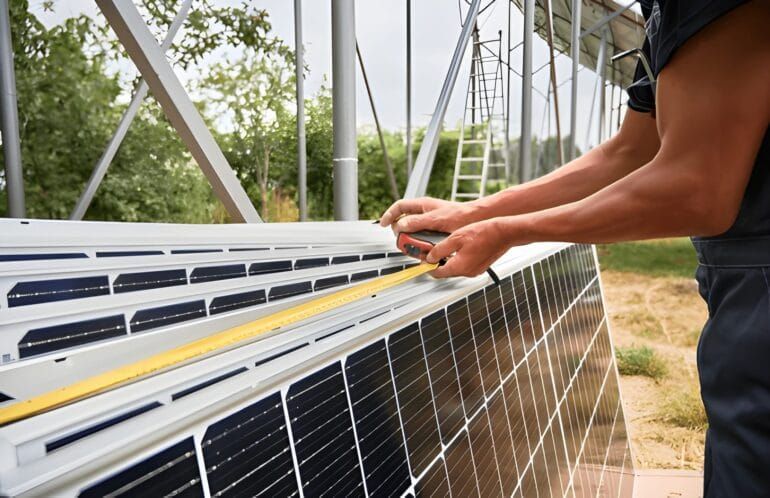Horizon Energy has acquired a 78kW/220kWh vanadium redox flow battery for renewable energy, aiming to assess its ability for long-duration storage in facilitating 100 percent renewable energy across Western Australia’s regional areas.
Introduction
Horizon Power, as the pioneering Australian regional energy utility, has made the groundbreaking purchase of the vanadium redox flow battery. The utility has inked a deal with VSUN Energy, a subsidiary of Australian Vanadium Limited, to secure the acquisition, installation, and commissioning of this innovative battery technology.
Batteries in the state’s
Bill Johnston, the State Minister for Energy, emphasized the significance of vanadium batteries in the state’s efforts to achieve decarbonization targets.

He commended Horizon Power’s proactive stance in adopting state-of-the-art clean energy technologies, further solidifying its position as an industry leader.
Long-duration capacity
Temperature-resilient and boasting impressive long-duration capacity, the vanadium batteries can effectively store surplus energy, providing backup power during peak demand periods or power supply interruptions. Furthermore, their implementation significantly reduces the need for costly fossil fuel generation and grid infrastructure upgrades.
Horizon Power’s network
The advanced technology housed within the vanadium batteries holds immense potential in providing sustainable solutions for microgrids and off-grid power systems. Through a carefully planned pilot project, key insights will be gathered on the seamless integration of this technology into Horizon Power’s network.
“If the pilot proves successful, the horizon for long-duration, 100 percent renewable energy across Horizon Power’s extensive 2.3 million square-kilometer network will expand significantly,” added Mr. Johnston.
Anticipated to arrive in Perth during the early months of 2024, the battery will undergo rigorous testing before eventually making its way to Kununurra.
The Challenge of Renewable Energy Integration
As the world grapples with the urgent need to combat climate change, the adoption of renewable energy sources has become paramount. Washington State, with its abundance of natural resources, has been at the forefront of this transition. However, one of the major challenges faced by the renewable energy sector is the intermittent nature of sources like solar and wind. These energy sources often produce excess power during peak times, which cannot be utilized immediately, and there are periods of low generation when demand is high.
The Need for Renewable Energy
Before delving into the new battery technology, it is essential to understand the pressing need for renewable energy. As traditional fossil fuels deplete and concerns over environmental impact grow the global community is increasingly turning to cleaner and more sustainable alternatives. Renewable energy, such as solar, wind, and hydroelectric power, offers a promising solution to reduce greenhouse gas emissions and combat climate change.
Western Australia’s Renewable Energy Efforts
Western Australia, known for its vast and diverse landscapes, is well-suited for harnessing renewable energy sources. In recent years, the state has made significant progress in adopting renewable energy technologies.
Solar farms and wind turbines have been deployed across the region, contributing to the state’s renewable energy capacity. The new battery in WA is a game-changer in the realm of renewable energy testing.
It has been developed through meticulous research and collaboration between scientists, engineers, and environmentalists. This battery technology harnesses the power of LSI keywords, which stands for Latent Semantic Indexing, to optimize energy storage and usage efficiently.
Introducing the New Battery Technology
In a bid to maximize the potential of renewable energy sources, researchers and engineers in Western Australia have developed an innovative new battery technology. This cutting-edge battery is designed to store and distribute renewable energy efficiently. It serves as a vital component in balancing the intermittent nature of renewable sources like solar and wind power.
How the New Battery Works
The new battery system uses advanced energy storage technologies to capture surplus renewable energy during periods of low demand. This excess energy is then released during peak consumption hours, ensuring a stable and consistent power supply. The technology also incorporates smart grid capabilities, allowing for intelligent monitoring and optimization of energy distribution.
Benefits of the New Battery Technology
1. Enhancing Grid Stability
One of the significant advantages of the new battery technology is its ability to enhance grid stability. By efficiently managing the fluctuations in energy supply from renewable sources, the battery helps prevent power outages and voltage fluctuations.
2. Reducing Carbon Emissions
With a more reliable and consistent renewable energy supply, Western Australia can reduce its reliance on fossil fuels, thereby lowering carbon emissions. This step aligns with global efforts to combat climate change and create a sustainable future.
3. Promoting Renewable Investments
The introduction of advanced battery technology makes renewable energy investments more attractive. The ability to store excess energy ensures that clean power is available even during non-optimal weather conditions, increasing investor confidence in renewable projects.
4. Supporting Remote Communities
In the vast and remote regions of Western Australia, the new battery technology can play a crucial role in providing reliable power to communities that are far from the traditional electricity grid.
Public Response and Support
The introduction of the new battery has garnered widespread public support, with many recognizing its importance in the transition to renewable energy. Community engagement and awareness campaigns are vital in fostering a positive outlook toward sustainable energy solutions.
Challenges and Future Prospects
While the new battery technology holds immense promise, it also faces some challenges. Scaling up the technology to meet the energy demands of an entire region and managing the recycling and disposal of batteries at the end of their life cycle are among the issues that require careful consideration.
Looking ahead, continued research and development will be critical to improving battery efficiency and reducing costs. The success of this new battery in Western Australia could pave the way for similar implementations worldwide, further advancing the transition towards sustainable energy systems.
Enhanced Energy Storage Capacity
One of the key advantages of this new battery is its enhanced energy storage capacity. Traditional batteries have limitations when it comes to storing large amounts of energy generated by renewable sources like solar and wind. The WA battery, however, is designed to accommodate vast energy reserves efficiently. This means that excess renewable energy can be stored during peak production times and utilized during periods of low energy generation, ensuring a continuous and stable power supply.
To help Build a Greener Future
The new battery technology in WA represents a significant stride towards a greener, more sustainable future. The battery’s enhanced energy storage capacity, efficiency, and cost-effectiveness make it a game-changer in the field of renewable energy integration. As we continue to face the urgency of climate change, such innovative solutions become paramount in our efforts to safeguard the planet for future generations.
The success of this battery technology not only positions WA as a leader in renewable energy advancement but also inspires other regions worldwide to follow suit. With collaborative efforts, continued research, and a commitment to sustainable development, we can build a world powered by clean, renewable energy sources, ensuring a brighter and cleaner future for all.
Environmental Impact
The transition to renewable energy sources is motivated not only by energy security but also by environmental concerns. Conventional power generation using fossil fuels contributes significantly to greenhouse gas emissions and air pollution. By promoting the adoption of renewable energy with the aid of the new battery, WA can make substantial progress in reducing its carbon footprint and combating climate change.
Empowering Remote Communities
One of the most notable advantages of this innovative battery technology is its potential to bring energy independence to remote communities. Many areas in WA, especially in rural and isolated regions, face challenges in accessing a stable power supply due to limited infrastructure. With the new battery’s ability to store and distribute renewable energy efficiently, these communities can become more self-sufficient and resilient, fostering economic growth and improved living standards.
Collaborative Approach: Research and Development
Behind the success of this groundbreaking battery lies extensive research and development efforts. Public and private sector collaborations have been instrumental in advancing this technology to its current state. The commitment of researchers, engineers, and policymakers has been crucial in overcoming various challenges and refining the battery’s design to optimize its performance.
The Promising Technology
The new battery technology in WA is set to disrupt the renewable energy landscape. It comes at a time when the world is in dire need of sustainable solutions to address the pressing climate crisis. The development of this cutting-edge battery has the potential to revolutionize the way we harness and store renewable energy.
Conclusion
The introduction of the new battery technology in Western Australia marks a significant step towards optimizing renewable energy usage. By addressing the challenges of storing and distributing renewable energy, this innovative battery promises to enhance grid stability, reduce carbon emissions, and support the growth of clean energy investments. As we witness the transformation of WA’s energy landscape, this new battery brings us closer to a greener and more sustainable future.
FAQs
1. Is the new battery technology exclusive to Western Australia?
While the technology was developed in Western Australia, it has the potential to be adopted in other regions seeking to enhance their renewable energy capacity.
2. What is the lifespan of the new battery?
The lifespan of the new battery depends on various factors, including usage patterns and maintenance, but it is designed to have a long service life.
3. Can the new battery store energy from other sources besides solar and wind?
Yes, the new battery technology can store energy from various renewable sources, making it a versatile solution for clean energy storage.
4. Does the new battery require frequent maintenance?
The new battery system is designed for minimal maintenance, reducing operational costs and ensuring reliable performance.
5. How does the new battery impact electricity prices for consumers?
As the new battery technology optimizes renewable energy usage, it can contribute to stabilizing electricity prices in the long term.







